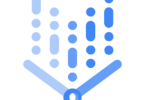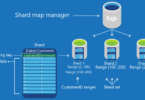Role-Based Access Control (RBAC) restricts network access to specific files and programs based on an employee’s responsibilities. This helps ensure that lower-level employees don’t have access to sensitive information or high-level systems.
Start by evaluating your business needs and analyzing different job functions, technologies, and business processes that would benefit from RBAC. Iterative adjustments and regular review are key to maintaining an effective security solution.
Inadequate Security
Once roles are defined, a company can implement security controls to provide greater visibility to executives and guarantee authorized users or guests have the necessary access. The role-based access control (RBAC) systems offer key benefits, including improved compliance and reduced costs.
Defined roles allow IT staff to create a centralized user permissions and rights database. This is a significant improvement over the traditional method of assigning individual permissions to each employee. The system can also reduce IT workload and downtime by eliminating the need to manage personal permissions for new employees and guest users and reset passwords.
In addition, RBAC can help companies avoid the risk of security breaches by separating duties and protecting sensitive information. This helps organizations comply with local, state, and federal privacy laws and regulations.
Data Loss
RBAC systems allow you to control access to sensitive data and important applications at both a broad and granular level, ensuring that lower-level employees don’t have the power to steal or corrupt information. The system is also helpful in maintaining a separation of duties by allowing you to grant different levels of permissions to administrators, specialist users, and end-users.
Nevertheless, this security method has a reputation for being rigid, and it’s no wonder why: as teams grow, their needs change, and their level of access to resources may not fit the roles you defined in your policy documents. To address these challenges, some organizations try to side-step the problem by defining increasingly fine-grained roles or creating ad hoc ones as new needs emerge. However, such efforts create unnecessary friction and can dilute security.
To mitigate these issues, carefully examine your organization’s needs before moving to RBAC, including a comprehensive analysis of job functions, supporting business processes and technologies, auditing requirements, and the current security posture. Then, plan your implementation scope to match the company’s capabilities, focusing on networks and applications that store confidential information.
Disruption
When implementing RBAC, it is important to consider how the system will impact your business and employees. This includes establishing a process for making changes to roles. Also, it is crucial to include the principles of RBAC in employee training programs.
The best way to implement an RBAC system is to start with a high-level understanding of the business and its goals. This includes conducting a needs analysis to examine job functions, supporting business processes and technologies, and assessing the current security posture.
Once the needs analysis has been completed, it is time to define roles. This should be done using the principle of least privilege, which states that each role should have access to only the software and files they need to do their jobs. Also, avoiding common role design pitfalls, such as excessive or insufficient granularity and granting too many exceptions, is a good idea.
Next, rolling out the RBAC system in stages is a good idea. This will help to prevent a flood of work for IT and reduce disruptions to the business. The first stage should address a core group of users, providing less granular access control before gradually adding more roles. Collecting user feedback and monitoring the implementation is also a good idea to ensure it works properly.
Unnecessary Costs
Role-based access control reduces a company’s security expenses by allowing administrators to limit users’ permissions to what is required to do their jobs. It also helps businesses meet IT security requirements without sacrificing usability and productivity.
Initially, RBAC requires some time and investment to implement and manage. However, once it’s in place, your business can enjoy many benefits that will save you money in the long run.
Understanding your organization and business needs before implementing RBAC systems is important. This includes completing a needs analysis that examines different job functions, supporting business processes and technologies, and assessing your current security posture. This will help you avoid pitfalls such as an inappropriate level of granularity and excessive exceptions when defining roles. It’s also essential to roll out your system in stages. By doing this, you can prioritize a core group of users and provide less granular access control while gathering feedback and monitoring your implementation. This way, you can ensure a smooth transition and minimize business process disruptions. Lastly, it’s vital to have a system in place for managing user roles as employees move departments or get promoted. This will eliminate the need for paperwork and password changes that can add to significant costs.
Unproductive Employees
Achieving the security benefits of RBAC systems takes time and effort to get everything in place. This is especially true in larger organizations, where identifying current systems, determining how employees access each of these, and mapping out the responsibilities of each role can be a monumental undertaking.
The first step is an in-depth analysis of the hardware, software, and other resources that must be protected to meet your business goals. The next step is to clean up the bad data and entitlements accumulated over time. After this, it’s time to define roles and assign the appropriate permissions. The key to a successful implementation is to avoid common pitfalls like excessive or insufficient granularity and role overlaps.
Larger companies may roll out RBAC in stages, starting with a core group of users and gradually expanding. This will help minimize workforce disruption and provide a foundation for future changes. Regularly evaluate the system, collect feedback, and adjust the permissions necessary to maintain a smoothly running RBAC implementation.







